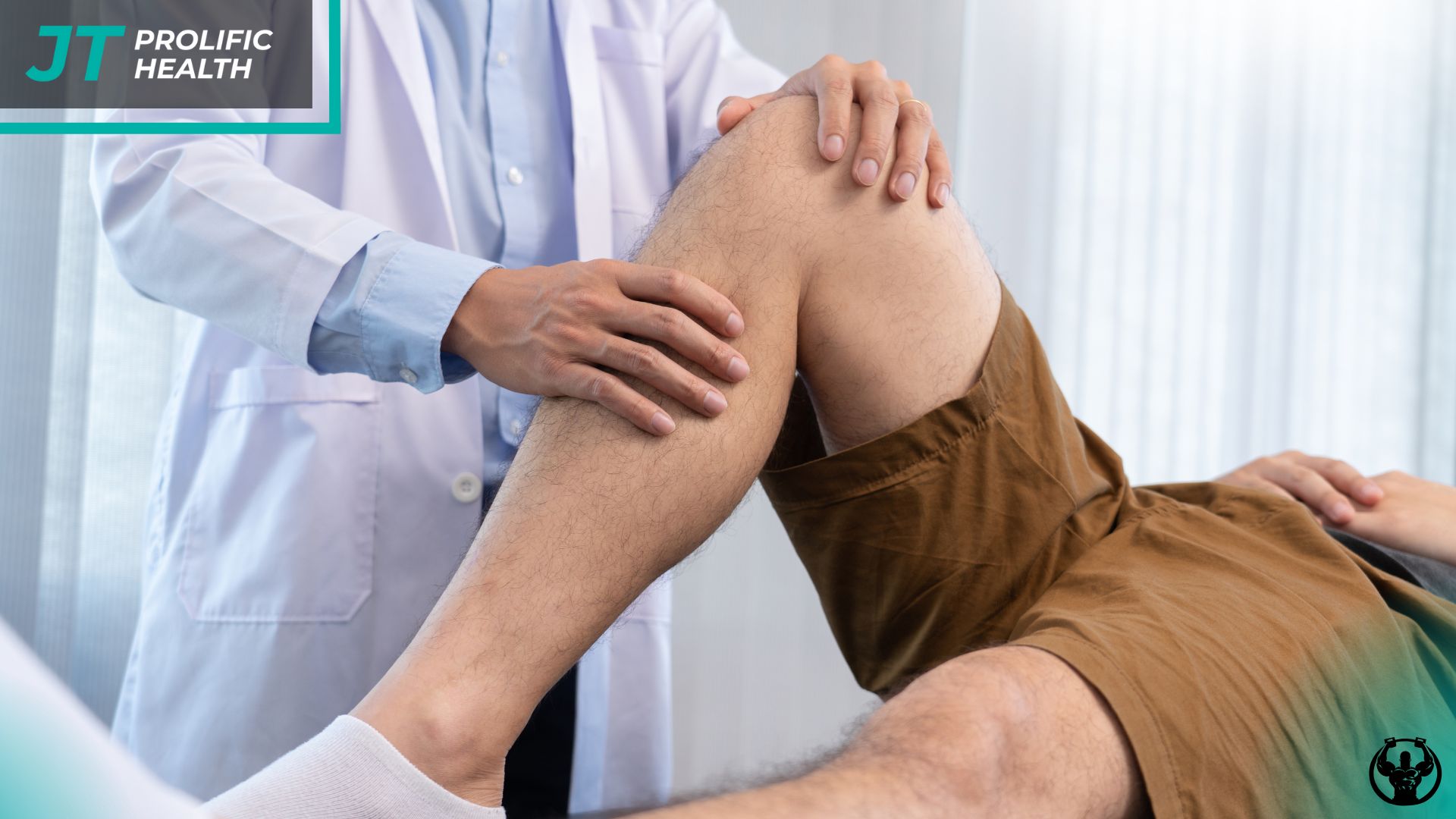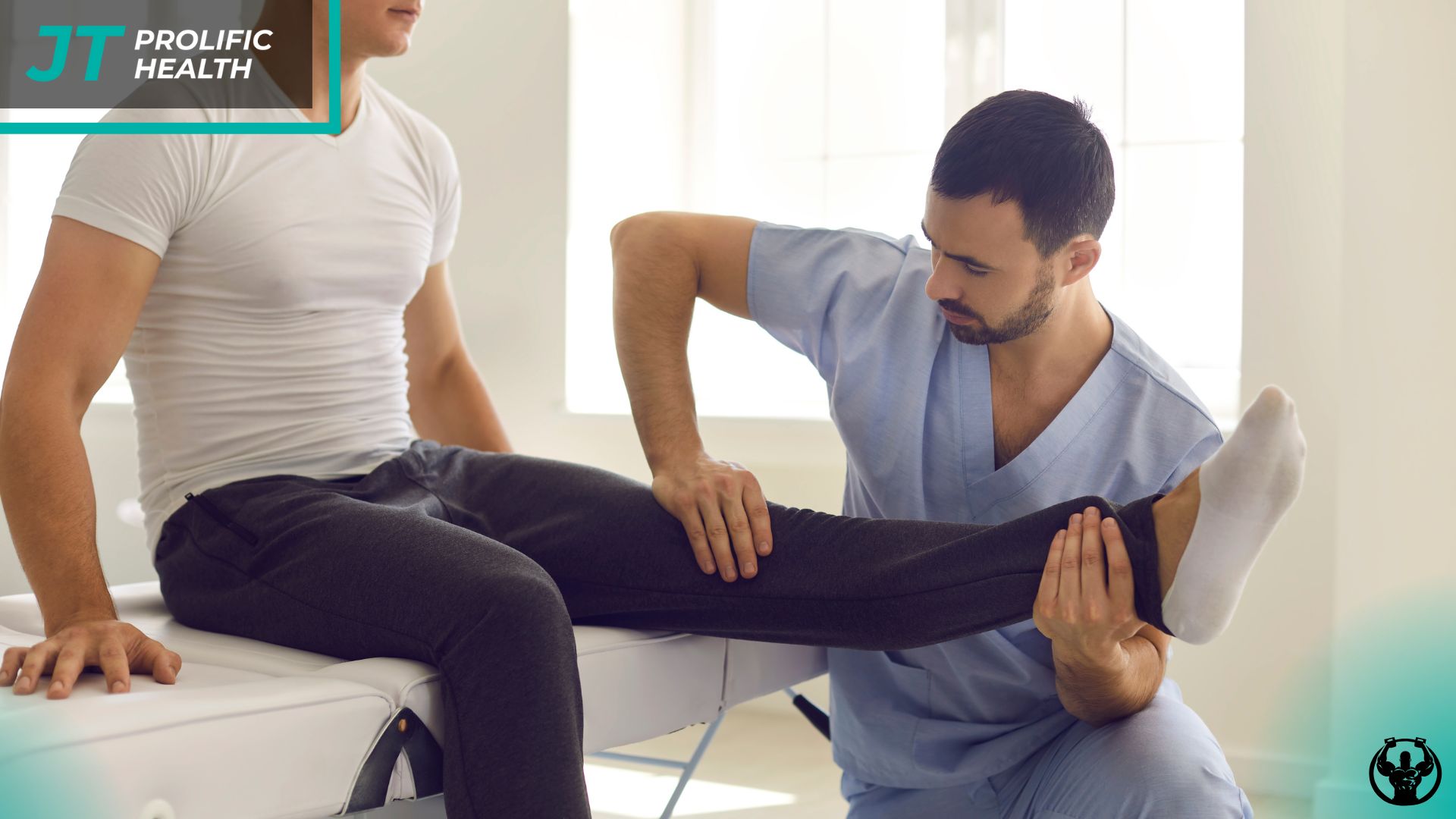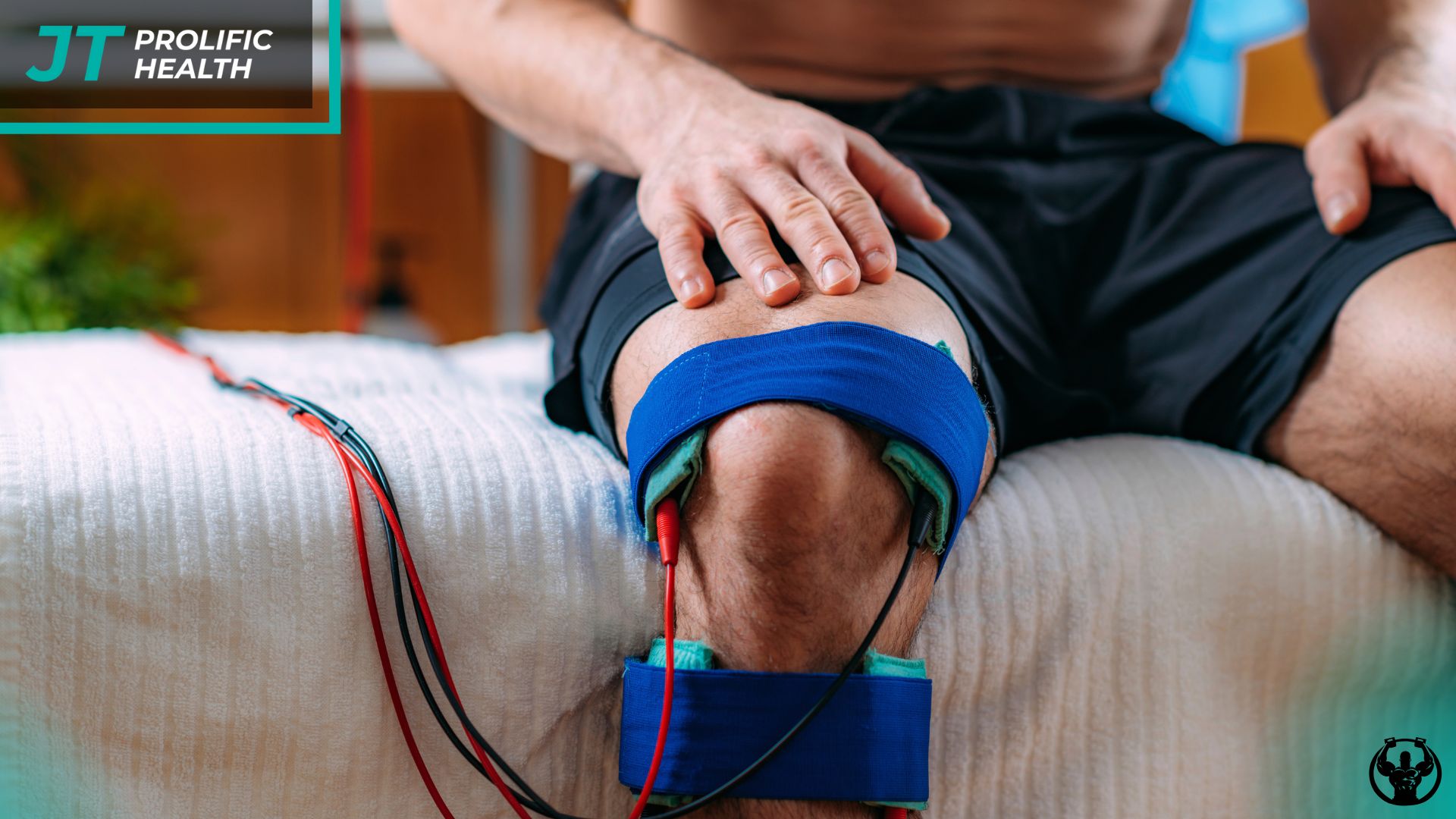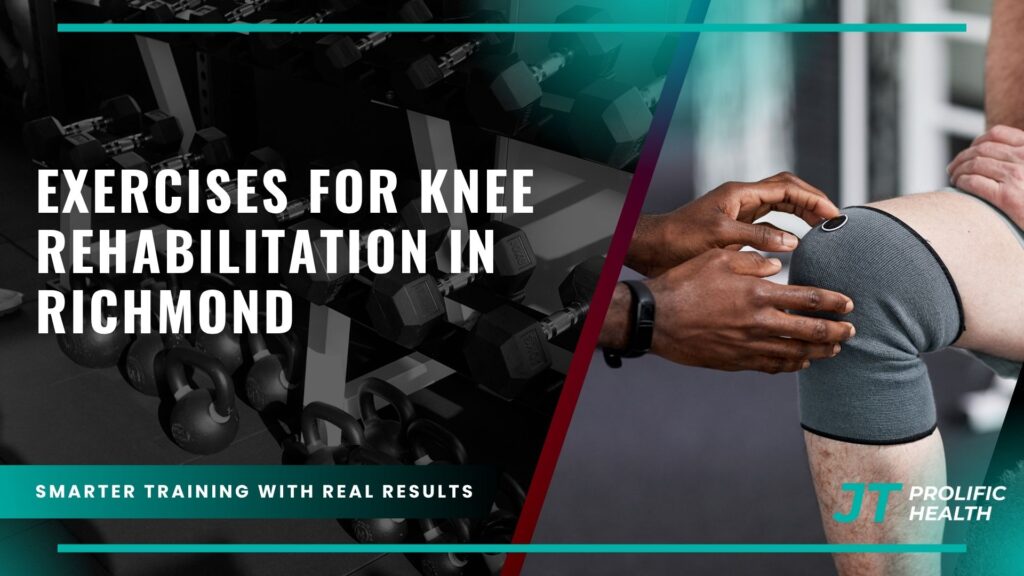Regaining strength and mobility after a knee injury requires careful guidance. At Prolific Health, our Richmond and Vancouver clinics specialize in structured programs tailored to your unique needs. Whether recovering from surgery or managing chronic discomfort, professional support ensures safe progress toward daily activities and active living.


Our team designs 4–6 week conditioning plans that adapt as you heal. These routines focus on restoring stability while preventing future issues. Many clients continue modified versions long-term to maintain joint health and confidence in movement.
Local residents benefit from our clinic’s hands-on approach. We combine movement analysis with progressive strengthening techniques to address pain sources effectively. Contact us at 604 818 6123 to discuss how our evidence-based strategies can support your recovery journey.
Key Takeaways
- Personalized programs adapt to surgical recovery, injuries, or chronic conditions
- Professional supervision prevents setbacks during healing phases
- Structured timelines balance immediate progress with long-term joint protection
- Exercise maintenance plans promote lifelong knee health
- Richmond-based services prioritize community accessibility and convenience
Introduction and Overview
Over 14 million North Americans face mobility limitations from knee-related conditions, with research confirming exercise therapy’s role in improving joint function. At Prolific Health, we understand how these challenges disrupt work, hobbies, and personal independence. Our team focuses on solutions that respect your body’s healing timeline while addressing root causes.


Our Commitment to Your Knee Health
Whether addressing post-injury recovery or chronic pain, our physical therapists create plans balancing immediate relief with lasting joint protection. We prioritize techniques proven to rebuild strength without overloading healing tissues. Each program adapts as you progress, ensuring safe advancement toward your goals.
Three pillars define our methodology:
- Precision movement assessments to pinpoint instability sources
- Progressive conditioning matching your recovery phase
- Clear guidance for maintaining results independently
By combining clinical expertise with compassionate support, we help Richmond residents reclaim pain-free movement. Our evidence-based strategies empower you to manage symptoms effectively while safeguarding long-term joint health.
Understanding what exercises for knee rehabilitation richmond
Rebuilding stability around your joints demands precise focus on supporting muscle groups. Strategic conditioning targets the quadriceps, hamstrings, and hip stabilizers to create a protective network for vulnerable areas. These efforts reduce strain during daily movements while promoting natural shock absorption.


Core Components of Effective Conditioning
Our programs prioritize four interconnected elements:
- Restoring full movement capacity through controlled stretches
- Gradually increasing resistance to rebuild muscular endurance
- Improving coordination between primary and stabilizing muscles
- Adapting routines as healing progresses
Strengthening exercises focus on the gluteal complex and inner/outer thigh muscles. These groups work together to maintain proper alignment during walking or bending. Weakness in these areas often leads to compensatory patterns that delay recovery.
Conditioning plans evolve through three phases: initial protection, progressive loading, and functional integration. This structured approach prevents overexertion while encouraging steady gains in stability. Our therapists monitor your response to ensure each movement supports your unique rehabilitation goals.
Benefits of Strength and Flexibility in Knee Recovery
Recovering full joint function requires more than isolated movements. Strategic conditioning builds both power and suppleness, creating a balanced support system. This dual approach addresses immediate recovery needs while laying foundations for durable joint health.
Strength Training Advantages
Developing muscular endurance around joints reduces daily wear and tear. Stronger tissues absorb impact during walking or climbing stairs, protecting delicate structures. Targeted resistance work also improves alignment, minimizing uneven pressure distribution.
Key benefits include:
- Enhanced shock absorption during high-impact activities
- Reduced mechanical stress on connective tissues
- Improved stability during rotational movements
Flexibility and Range of Motion
Gentle stretching maintains tissue elasticity essential for smooth movement. Restoring full joint mobility prevents stiffness that can lead to compensatory patterns. Consistent flexibility work also promotes nutrient-rich blood flow to healing areas.
Effective programs focus on:
- Gradual lengthening of shortened muscle groups
- Preserving natural movement capabilities
- Reducing post-activity soreness through proper cool-downs
Combining these approaches creates resilient support systems that adapt to life’s demands. Our therapists carefully balance intensity and recovery to maximize your progress.
Local Government Guidelines and Community Insights
Community health data reveals critical insights into effective joint care strategies. In Metro Vancouver, 23% of adults report chronic musculoskeletal issues – a statistic that informs our clinic’s approach to personalized care plans. By aligning with provincial health priorities, we address gaps in daily movement patterns that affect long-term joint health.
Richmond and Vancouver Health Priorities
Our team analyzes regional health reports to adapt programming for local needs. Recent findings show:
- 42% of residents with joint conditions fall short of recommended activity levels
- Urban lifestyles contribute to muscle imbalances affecting lower body mechanics
- Cultural diversity influences movement preferences and recovery goals
Aligning With National Standards
We implement Health Canada’s physical activity guidelines through phased rehabilitation strategies. This ensures:
- Safe progression timelines matching tissue healing stages
- Movement quality assessments preventing compensatory patterns
- Collaboration with physicians for comprehensive care coordination
By integrating provincial health authority recommendations, we create programs that respect both medical evidence and individual capabilities. Our therapists maintain active partnerships with Vancouver Coastal Health providers to streamline referrals and enhance continuity of care.
Step-by-step Demonstrations of Exercises
Proper technique transforms simple movements into powerful recovery tools. We break down each component to help you build confidence while protecting healing tissues. Follow these guidelines to maximize benefits while maintaining safety.
Warm-up Routine Best Practices
Begin with 5-10 minutes of gentle activity to increase blood flow. Walking or stationary cycling prepares your leg muscles without stressing joints. This phase raises tissue temperature, improving flexibility for therapeutic movements.
Detailed Exercise Instructions
Perform these stretches on a stable floor surface. Maintain neutral spine alignment throughout:
- Heel Cord Stretch: Face a wall with one leg extended back. Keep both heels flat, leaning forward until tension builds. Hold position for 30 seconds. Complete 2 sets daily.
- Quadriceps Stretch: Stand near support. Bend one leg upward, grasping your ankle. Gently pull until feeling mild tension. Maintain for 30-60 seconds. Repeat 2-3 times per session.
- Hamstring Stretch: Sit with one leg extended. Reach toward your toes while keeping the back straight. Hold position 30 seconds. Perform 4-5 days weekly.
Adjust intensity by bending your knees slightly if needed. Stop immediately if sharp pain occurs. Our therapists demonstrate modifications for different recovery stages during consultations.
Consistency matters more than duration. Short daily sessions yield better results than occasional long workouts. Track your progress through improved ease of movement over time.
Integrating Expert Physical Therapy and Safety Protocols
Collaboration between healthcare professionals ensures personalized rehabilitation plans. At Prolific Health, our licensed team works closely with physicians to align therapeutic interventions with medical needs. This doctor-physical therapist partnership creates tailored strategies addressing your unique healing timeline and activity goals.
Medical Team Coordination Essentials
Your program begins with a thorough assessment of joint stability and movement patterns. We review medical imaging and surgical reports to identify safe exercise parameters. Regular progress updates are shared with referring doctors to maintain care continuity.
Smart Pain Response Practices
Mild tension during stretches is normal, but sharp discomfort signals potential harm. Our therapists teach proper breathing techniques and positioning adjustments to maintain therapeutic benefits. You’ll learn to recognize when to modify intensity or pause activities.
Key safety measures include:
- Pre-session screenings for swelling or reduced mobility
- Real-time form corrections during therapeutic movements
- Gradual progression checkpoints approved by your care team
Never push through sudden pain when performing stretches. If discomfort persists beyond 24 hours, contact your physical therapist immediately. We provide clear guidelines for adjusting home routines between supervised sessions.
Scheduling Your Consultation with Prolific Health
Taking proactive steps toward joint health begins with expert-led planning. Our Richmond and Vancouver clinics offer streamlined booking processes to help you start personalized programs quickly. Initial assessments identify specific needs while addressing concerns about mobility limitations or discomfort.
Expert guidance and appointment booking
Expert Guidance and Appointment Booking
Comprehensive evaluations form the foundation of successful recovery strategies. During your first visit, we analyze:
- Leg muscle balance affecting joint stability
- Range of motion in key areas like the thigh and lower back
- Movement patterns contributing to strain or discomfort
Programs typically span 4-6 weeks, with adjustments made during weekly check-ins. Many patients transition to maintenance routines involving 2-3 weekly sessions to preserve results. Our team coordinates with healthcare providers to ensure alignment with medical recommendations.
Flexible scheduling options accommodate work and family commitments. Contact us at 604 818 6123 to secure your assessment slot. Same-week appointments often available for urgent cases requiring immediate attention.
Long-term joint protection relies on consistent care. We equip you with modified home routines and progress tracking tools after completing initial phases. Ongoing support helps adapt strategies as fitness goals or lifestyle needs evolve.
Conclusion
Effective recovery strategies blend science with personalized care. At Prolific Health, we combine movement analysis with targeted conditioning to restore joint function safely. Our approach addresses muscle imbalances while protecting healing tissues through every phase.
Proper technique forms the foundation of lasting results. Therapists monitor your progress, adjusting intensity to match your body’s responses. This ensures each session builds strength without compromising range of motion or stability.
Consistency transforms rehabilitation into lasting joint health. While initial phases focus on pain reduction, maintenance plans preserve gains long-term. Regular check-ins help adapt routines as your activity levels evolve.
Trust our Richmond-based team to guide your journey toward confident movement. Call 604 818 6123 to start your personalized program today.




